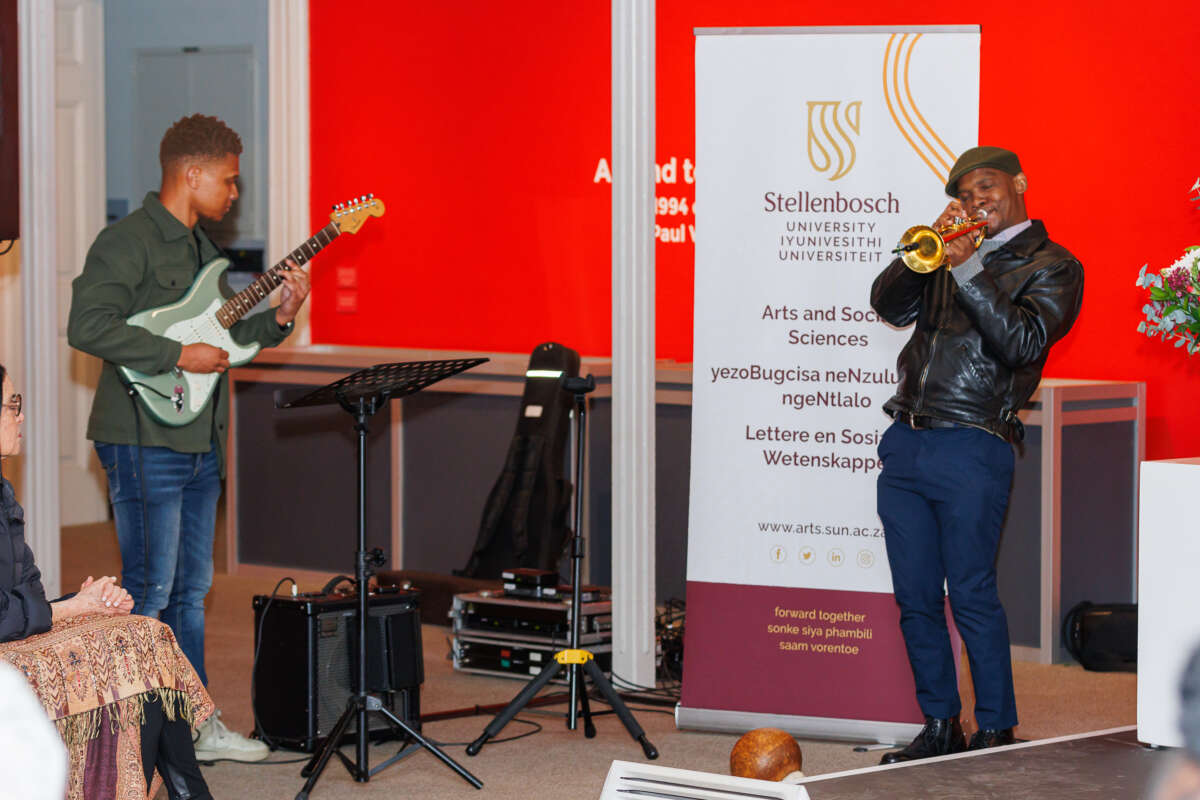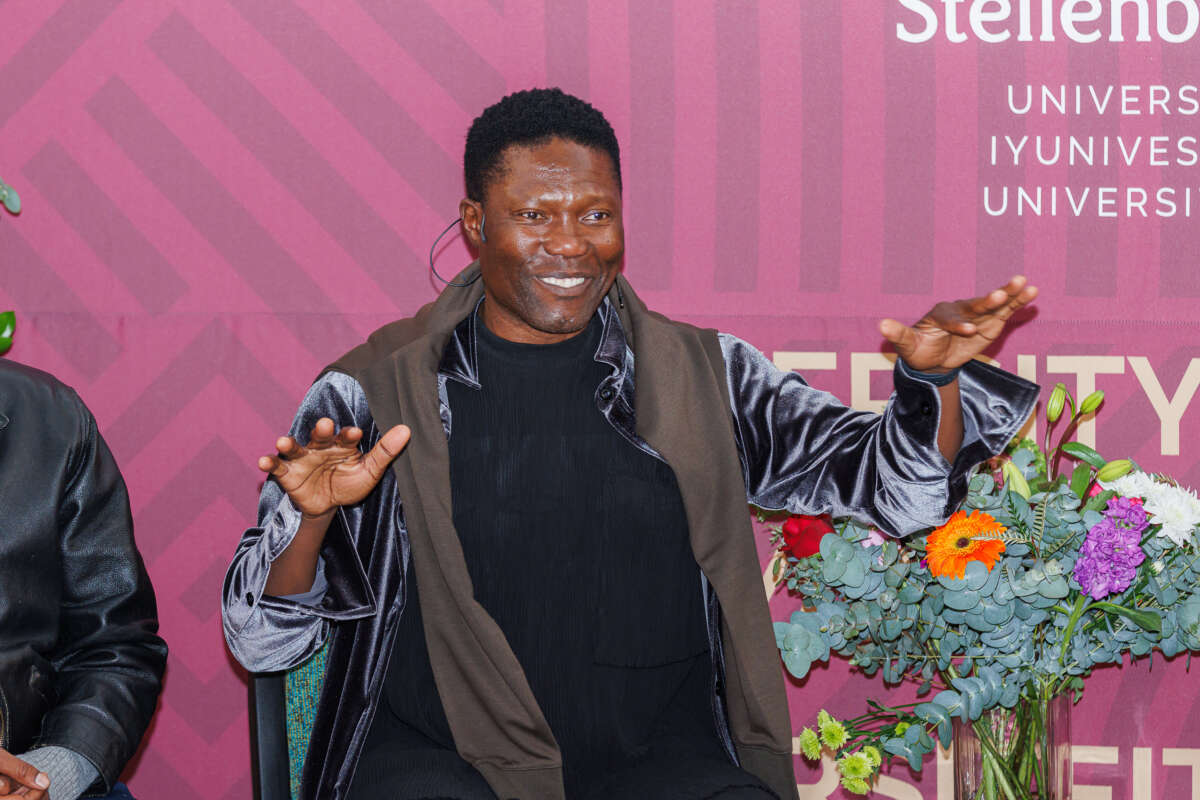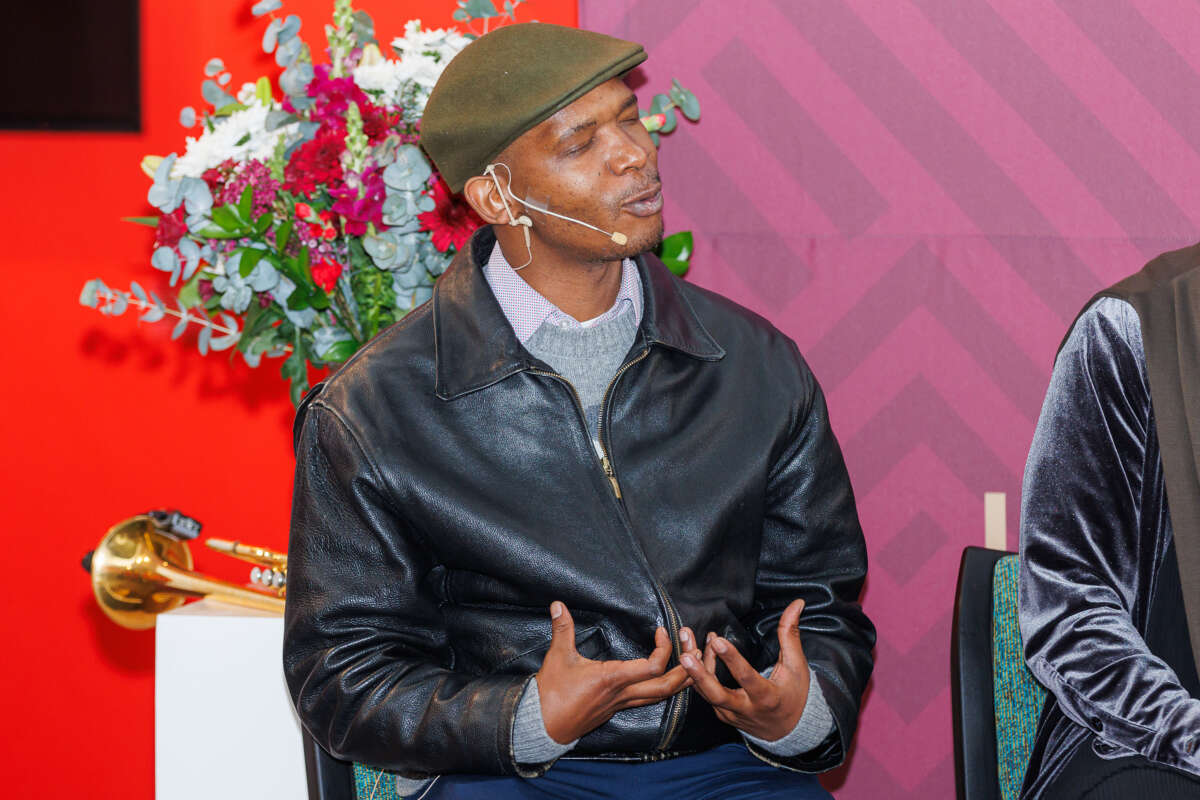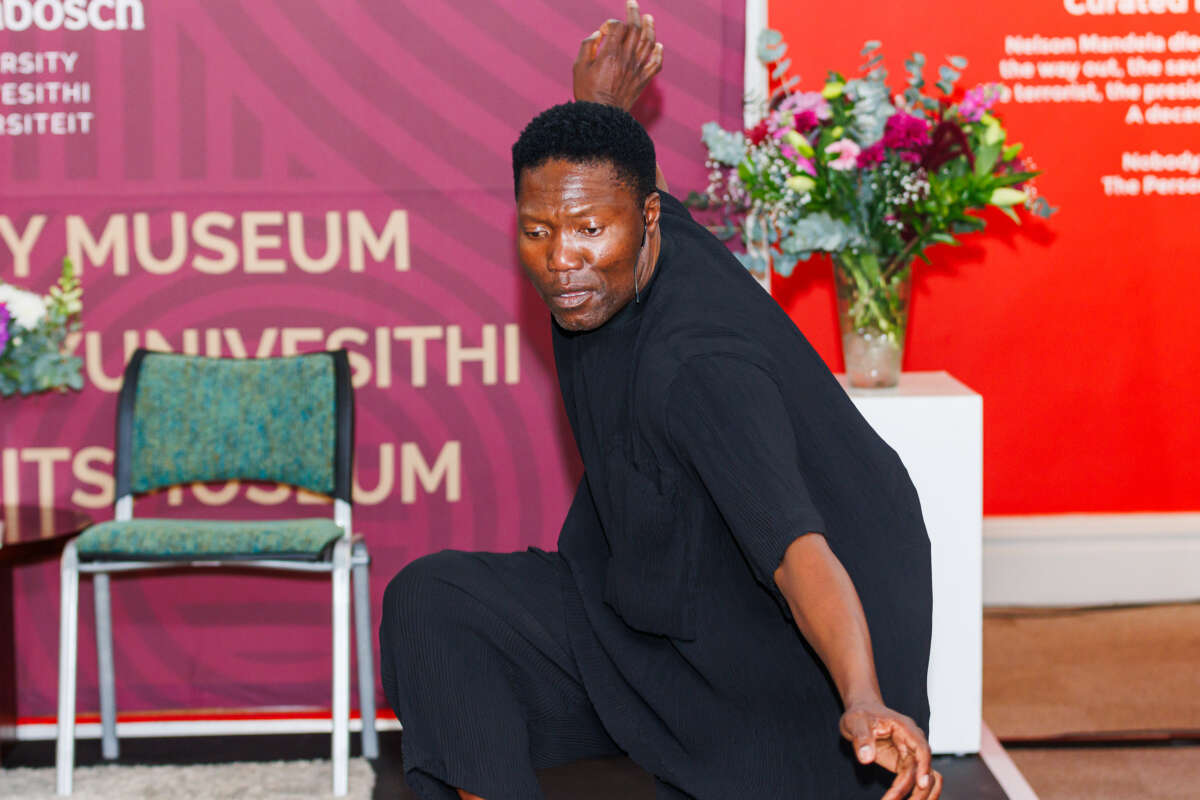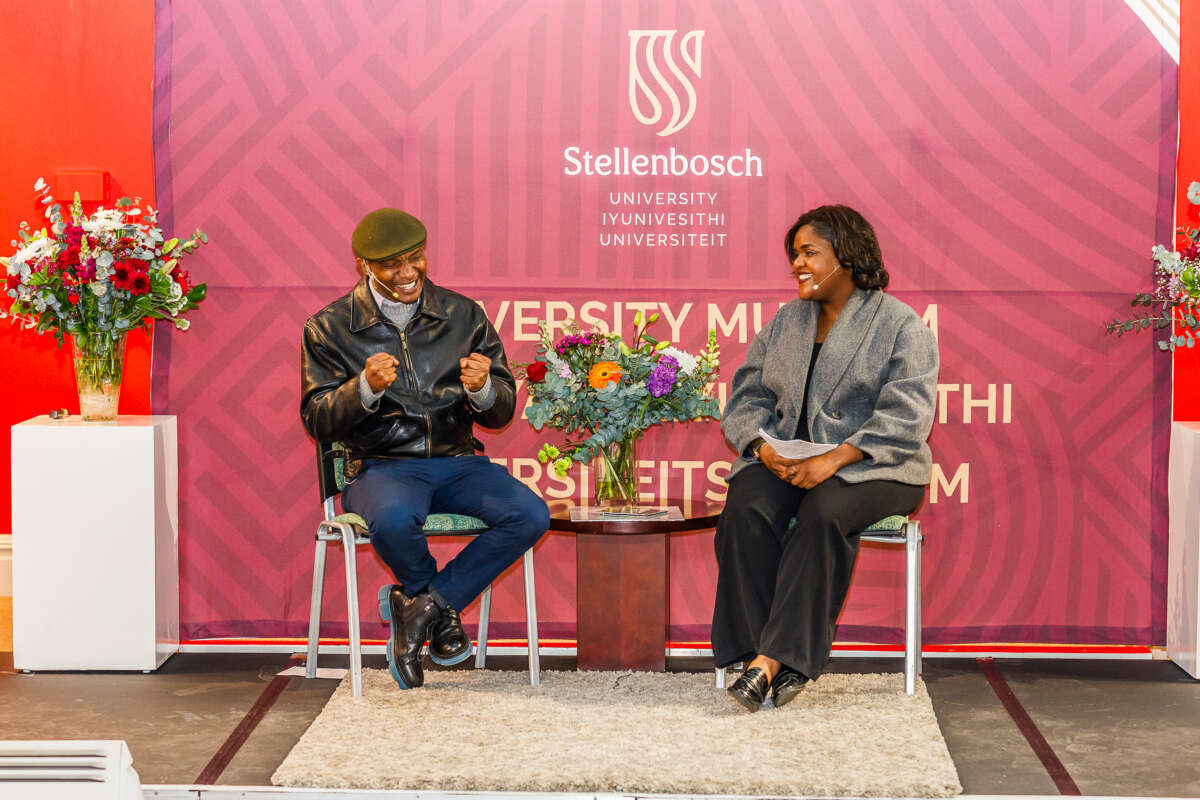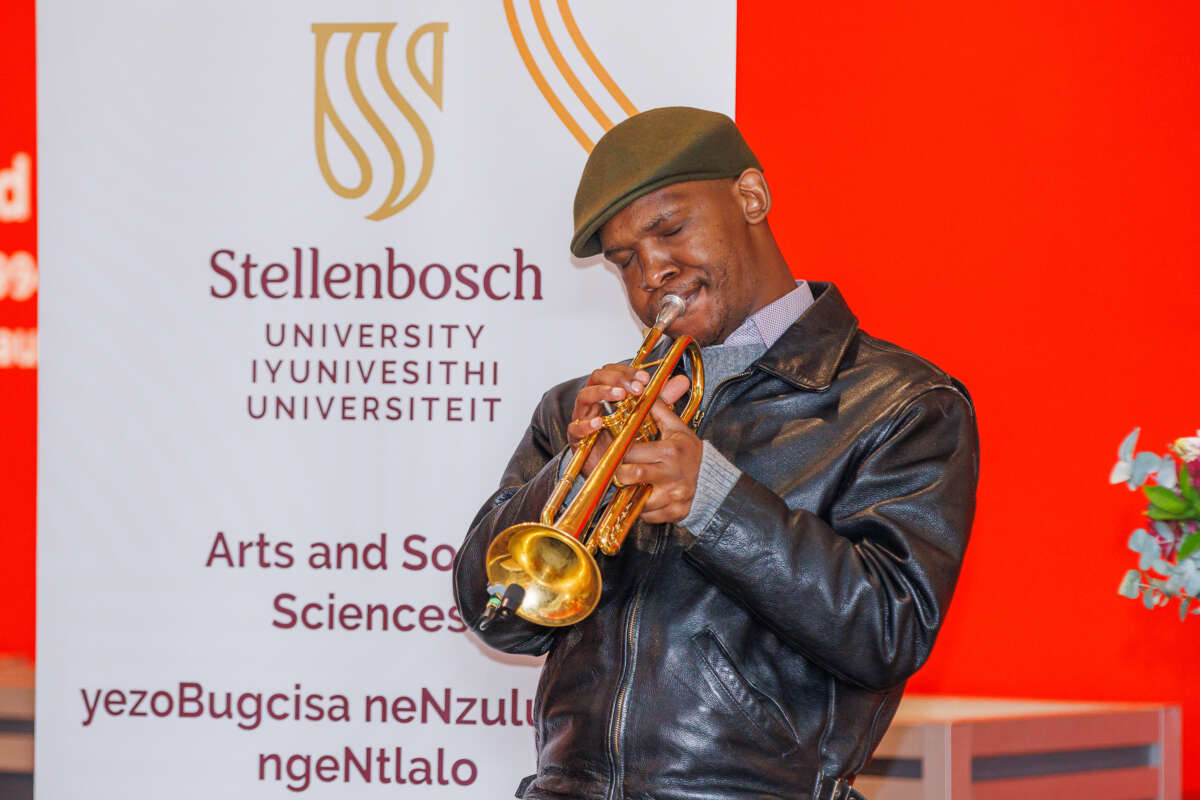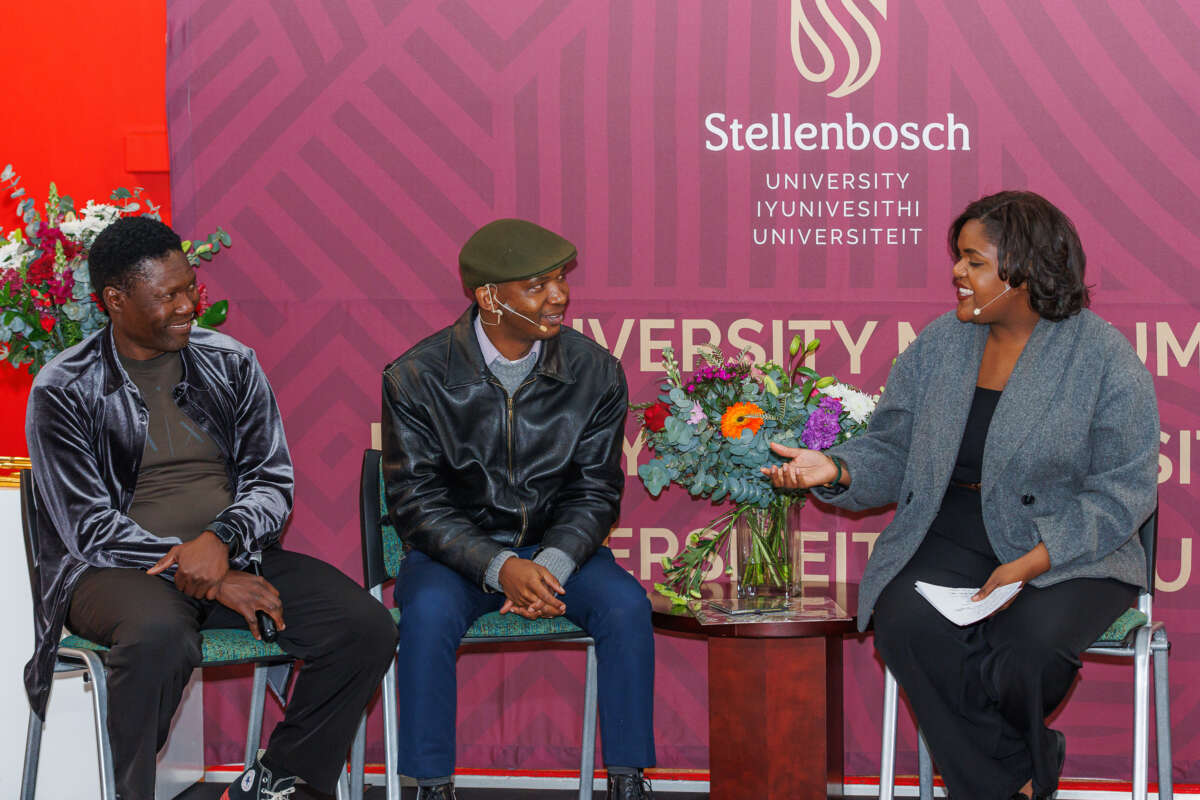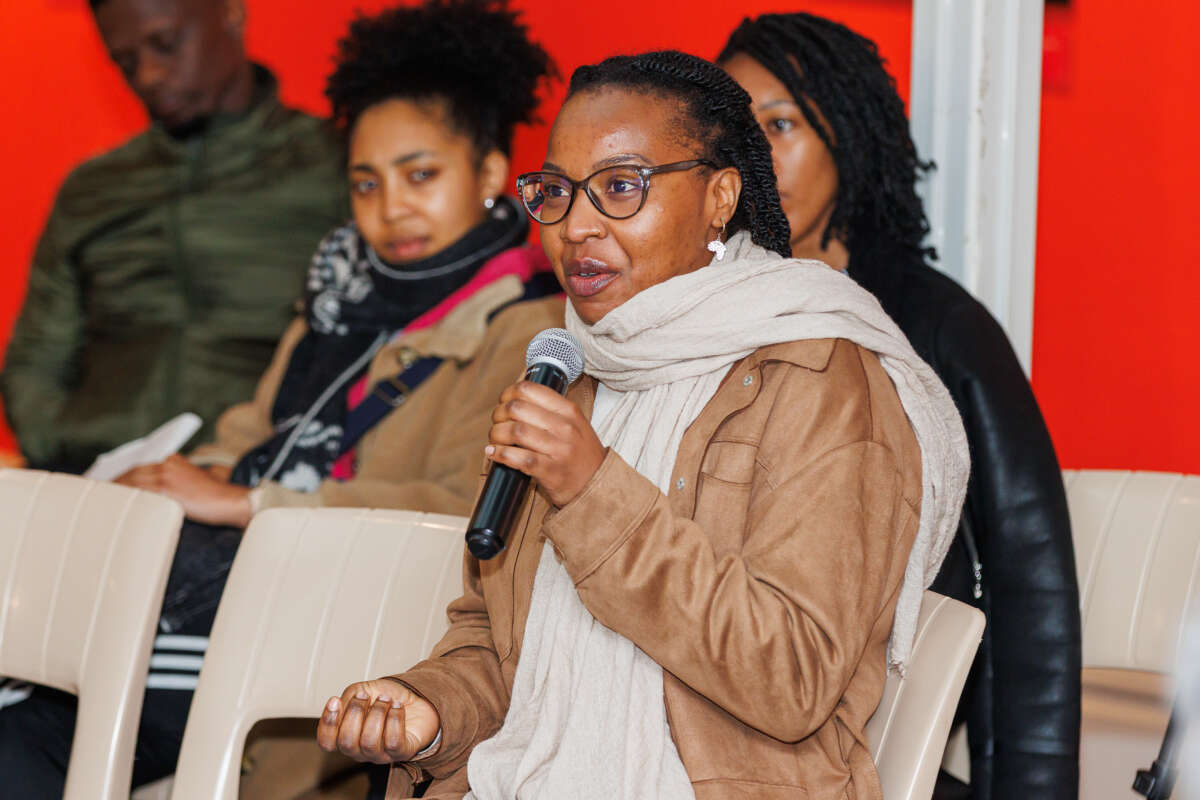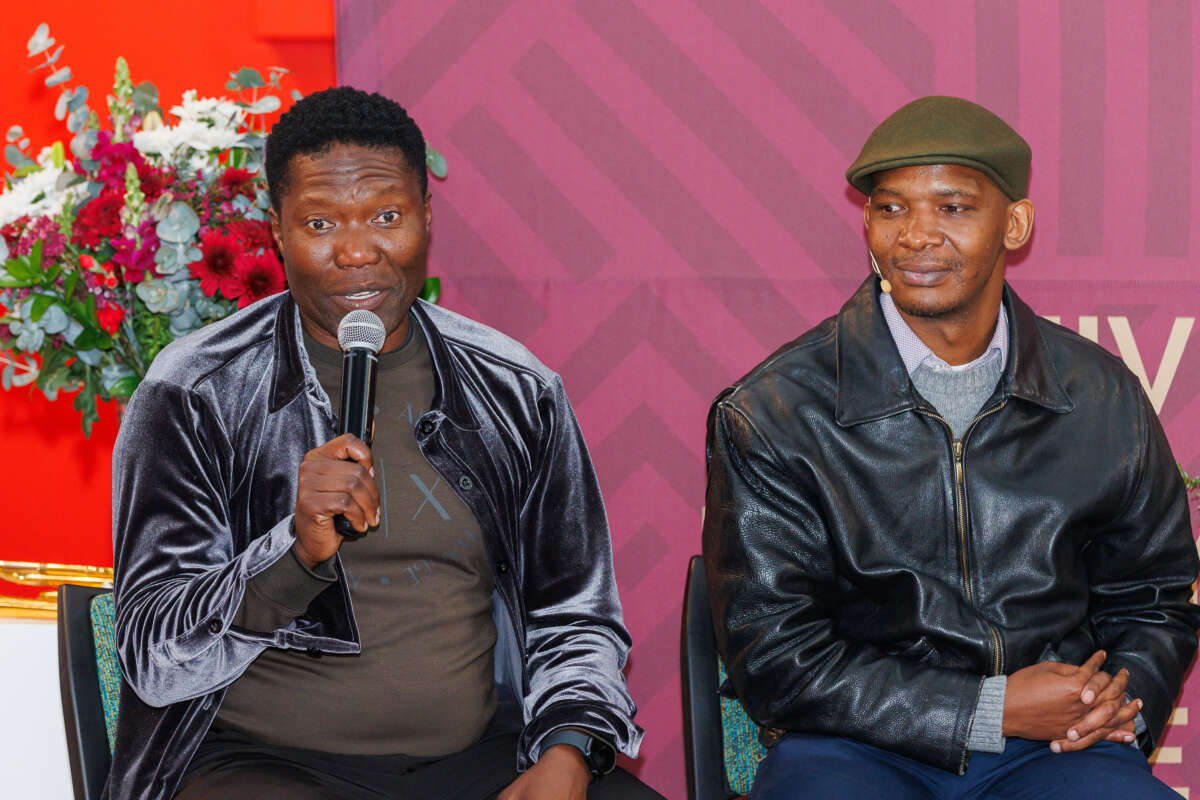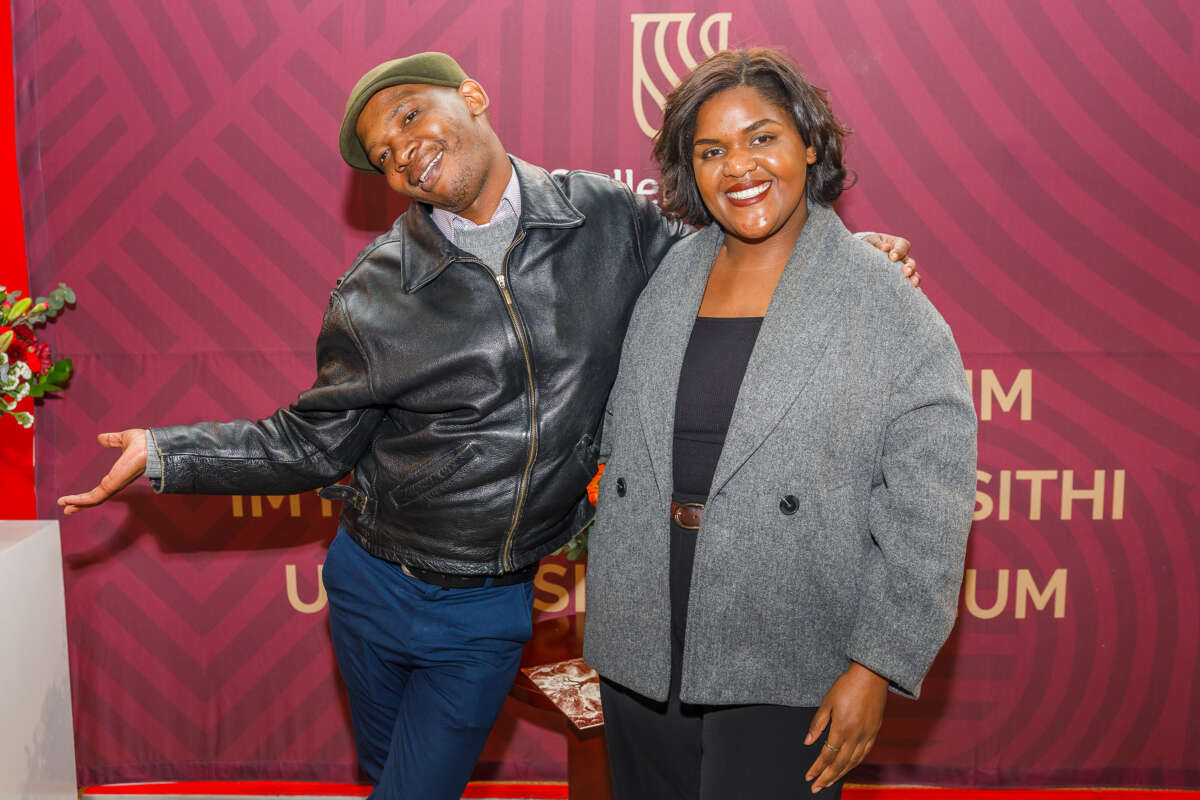Professor Pumla Gobodo-Madikizela framed this session as a bridge between the earlier conversation about how women’s bodies carry and express trauma and the performative interpretations by Maqoma and Mlangeni. Described as an exploration of trauma, healing, and the unique ways in which dance and music serve as vessels for memory, history, and emotional expression.
Gregory Maqoma, a world-renowned dancer-choreographer, and Mandla Mlangeni, an acclaimed trumpeter and composer, probed the themes discussed earlier in the day, continuing the conversation around trauma and historical memory as raised in the panel. She described the event as a reflective performance, where the artists would use their respective mediums to offer their interpretations of the themes raised earlier, giving the audience a chance to process the day’s emotions through dance and music. This interplay of dialogue and performance was essential in illuminating the impact of art as a method of repair and political expression.
Gregory Maqoma’s performance was particularly powerful as he spoke to the “custodians of pain” and how, through his dance, he processes trauma into a form of collective healing. Maqoma drew on his personal experiences, growing up in Soweto during the violent years of apartheid, where the smoke-filled air from gunfire and burning tires was a daily reality. For him, the imagery of smoke is integral to his performances, symbolizing both the traumatic past and the process of digesting and releasing it. In his words, “the past is not dead… we can remember, process, and conscientize others,” underscoring that while history cannot be erased, it can be remembered and worked through artistically.
Mandla Mlangeni, similarly, used his trumpet as a tool for storytelling, tapping into the depths of his own experiences and collective histories. Mlangeni reflected on how music allowed him to connect with others, saying, “…it’s not just my story, it’s our story.” He shared that for him, the act of making music is both a personal and communal experience, where he can invite listeners to feel and process emotions alongside him. The audience could feel how his music was shaped by his family history, especially the legacy of his father, Bheki Mlangeni, a civil rights lawyer who was murdered by the apartheid government. Mlangeni’s work is imbued with these memories, transforming pain into sound, where each note carries the weight of history but also the potential for joy and transcendence.
Throughout the evening, the performances captured the essence of the earlier discussions on trauma, particularly how it manifests in the body and is expressed through different art forms. Sisonke Msimang, reflecting on the session, highlighted the balance between pain and joy, and how art provides a way to access the full range of human emotions, not just the pain of trauma. This theme resonated in both the music and the dance, where the performers managed to hold the ambivalence of joy and sorrow, past and present, within their bodies and their instruments. This event demonstrated that art could serve as a powerful tool, offering a way to engage with the complex legacies of the past while fostering healing and repair. As Maqoma put it, his goal was to “allow those being left behind to grieve” and provide space for survivors of trauma to process their experiences. Mlangeni’s music, too, brought a sense of communal healing, inviting the audience into a shared space of emotional reflection and connection.
Dr Anell Daries closed the session with a poignant reflection: “in this room, we are not just witnessing performances, but engaging in a shared journey of memory, trauma, and collective repair. As we explore the intersections of history and emotion, it’s through the arts that we find space to play, to heal, and to reclaim our narratives.” She emphasized that by combining the profound emotional expressions of dance and music, the session created an intimate, yet expansive dialogue on these themes, leaving the audience not just as spectators but as participants in the healing process. “Today has shown us that art, in its many forms, allows us to confront our past while creating new pathways for understanding and connection,” she concluded, inviting everyone to carry these powerful reflections forward.
